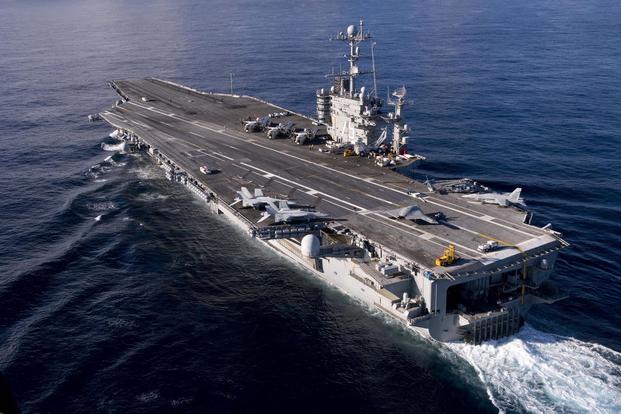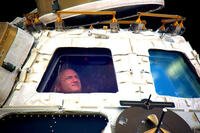Two days after the president's 2020 budget proposal was released, an influential congressman is hitting back against the Navy's plan to move an aircraft carrier into retirement decades early.
Rep. Rob Wittman, a Virginia Republican and ranking member of the House Armed Services seapower and projection forces subcommittee, called the decision to retire the Harry S. Truman "not a good thing."
"They're looking at taking a carrier that's 20 years old and saying, 'We're no longer going to use that one,'" Wittman said at the annual McAleese Defense Programs Conference in Washington, D.C. "... If you get rid of Truman early, you're taking a very valuable asset out of Navy inventory."
Wittman's district abuts Hampton Roads, where the Norfolk-based Truman would have undergone mid-life refueling.
The service made official its plans to forgo the Truman's scheduled 2024 refueling complex overhaul in its 2020 budget documents, released Tuesday. The money the Navy would have spent refueling the carrier's nuclear reactor core will now be used on investments for the next-generation fight, including unmanned vessels.
But Wittman said aircraft carriers are going to be "a key part of the future."
"You can go back and forth in the debate about the utility of aircraft carriers, but the bottom line is this: If aircraft carriers weren't critical in being able to project power, then why are the Chinese and the Russians building them at breakneck pace?" he said.
Chief of Naval Operations Adm. John Richardson told reporters Wednesday that the decision to retire the Truman is about "balancing capabilities." There are new security challenges, he said, and the Navy must carefully weigh the capabilities it invests in to take on near-peer adversaries.
Richardson also said the decision to retire the Truman could be revisited.
The Navy will complete another force-structure assessment this year, he said, which could change the service's 355-ship goal. Combatant commanders are also studying their security environments this year, he added, including how they might need each service to respond to crises in those regions.
"This budget entails the flexibility to respond to what those studies tell us," Richardson said. "If we continue to see a need for more aircraft carriers, we have the flexibility to revisit that decision."
The Navy has 11 aircraft carriers, and the 355-ship plan calls for a dozen. Retiring the Truman in 2024 would bring the total number down to 10, years before the Navy expects to get any replacements, Wittman said.
"I would argue that it is not wise to take away funding for the refueling and complex overhaul for the Truman," he said.
-- Gina Harkins can be reached at gina.harkins@military.com. Follow her on Twitter @ginaaharkins.












